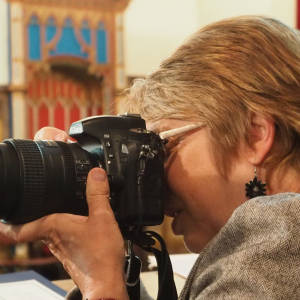'My Fair Lady' Bridge
In meeting the Movie challenge, My Fair Lady, which refers to the transformation of street girl, Eliza Doolittle, into a 'lady', I have taken an alternative view. Going 'off piste', I have researched the nursery rhyme, 'London Bridge is falling down' which has 'My Fair Lady' in its refrain. This particular bridge arch spans a narrow stream in the grounds where I teach.
Read on if you have time .....
"London Bridge Is Falling Down", also known as "My Fair Lady" or simply "London Bridge", is a traditional nursery rhyme and singing game, found in different versions all over the world. It may date back to bridge rhymes and games of the late Middle Ages, but the earliest records of the rhyme in English are from the seventeenth century. There is considerable variation in the lyrics of the rhyme and similar rhymes can be found across Europe, pre-dating the records in England.
The oldest version is recalled by a correspondent to the Gentleman's Magazine in 1823, which he claimed to have heard from a woman who was a child in the reign of Charles II (r. 1660-85) and had the lyrics:
London Bridge is broken down,
Dance over the Lady Lea;
London Bridge is broken down,
With a gay lady (la-dee).
The earliest printed English version is in the oldest collection of nursery rhymes, Tommy Thumb's Pretty Song Book, printed by John Newbery in London around 1744.
The meaning of the rhyme is not certain. It may simply relate to the many difficulties experienced in bridging the River Thames, but a number of alternative theories have been put forward.
1 Viking attack theory: the rhyme relates to the supposed destruction of London Bridge by Olaf II of Norway in 1014 (or 1009).
2 Child sacrifice theory: that the song refers to the burying, perhaps alive, of children in the foundations of the bridge based around the idea that a bridge would collapse unless the body of a human sacrifice were buried in its foundations and that the watchman is actually a human sacrifice, who will then watch over the bridge. However, there is no archaeological evidence for any human remains in the foundations of London Bridge
3 Age and damage theory: the rhyme refers to the deterioration of the original London Bridge built in 1176, which had been considered a wonder of the world) due to a combination of age and the Great Fire of London of 1666.[13] Until the mid-eighteenth century the Old London Bridge was the only crossing on the Thames in London. It was damaged in a major fire in 1633, but in the fire of 1666 this damage acted as a fire break and prevented the flames from further damaging the bridge and crossing to the south side of the Thames. With its 19 narrow arches it impeded river traffic and flow. Widening and the removal of its houses was completed in 1763, but it remained relatively narrow and needed continual and expensive repairs. In the early nineteenth century it was decided to replace the bridge with a new construction. New London Bridge was opened in 1831 and survived until it was replaced in 1972. It was then transported and reconstructed in Lake Havasu City, Arizona.
"Fair lady" identity
Several attempts have been made to identify the 'fair lady', 'lady gay', or lady 'lee/lea' of the rhyme. They include:
• Matilda of Scotland (c. 1080–1118) Henry I's consort, who between 1110 and 1118 was responsible for the building of the series of bridges that carried the London-Colchester road across the River Lea and its side streams between Bow and Stratford.
• Eleanor of Provence (c. 1223–91), consort of Henry III who had custody of the bridge revenues from 1269 to about 1281.
• A member of the Leigh family of Stoneleigh Park, Warwickshire, who have a family tradition that a human sacrifice lies under the building.
Whatever the origin and history, it remains a childhood memory in the minds of most adults. I bet most of us don't know that!

Comments
Sign in or get an account to comment.


